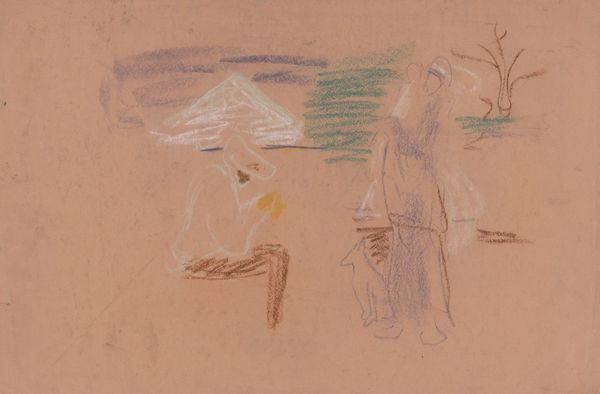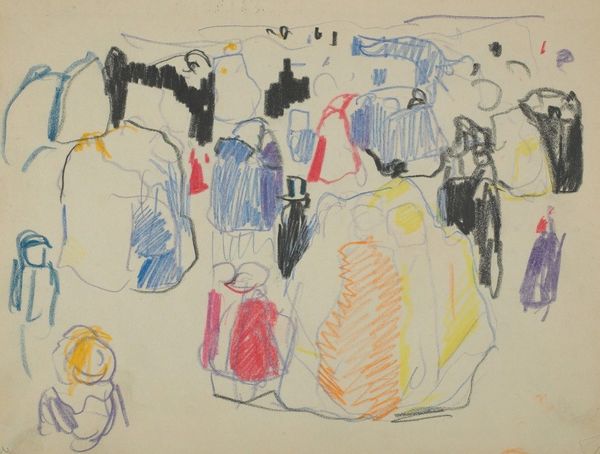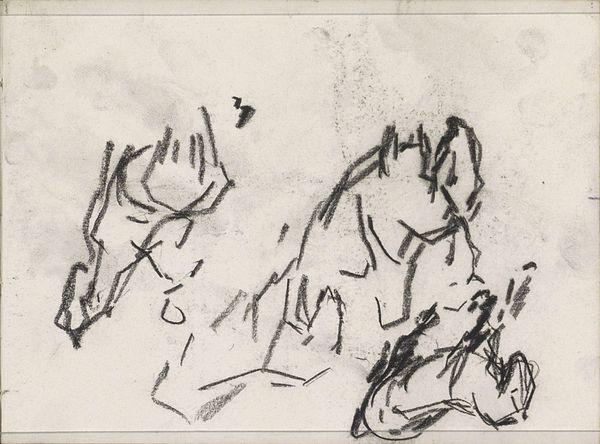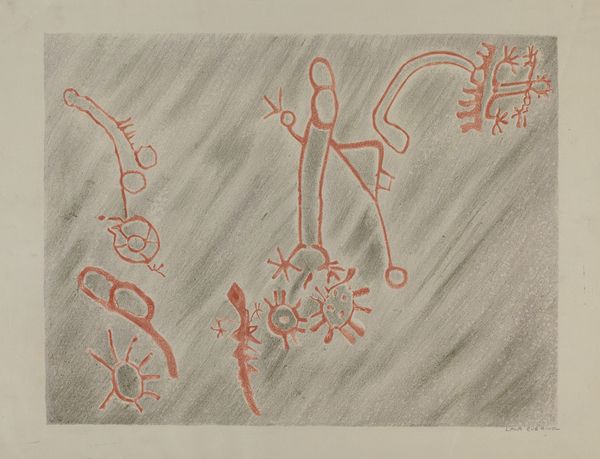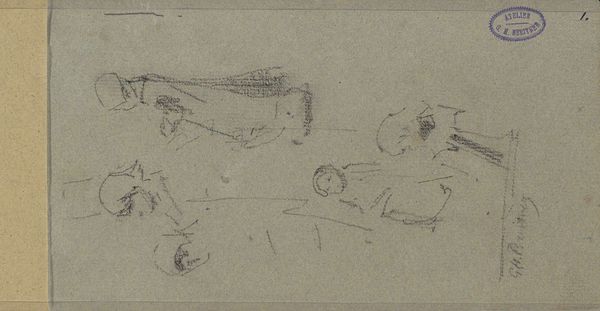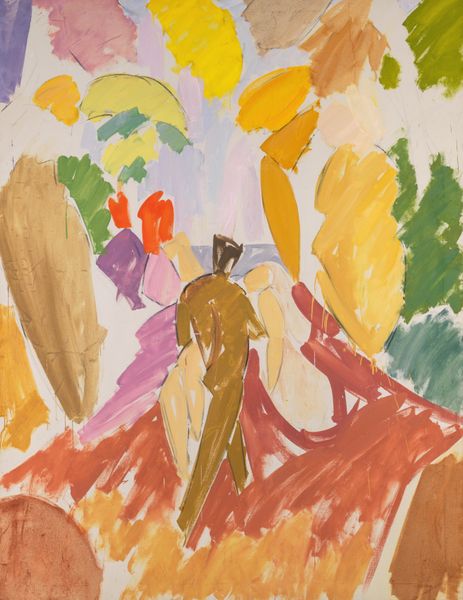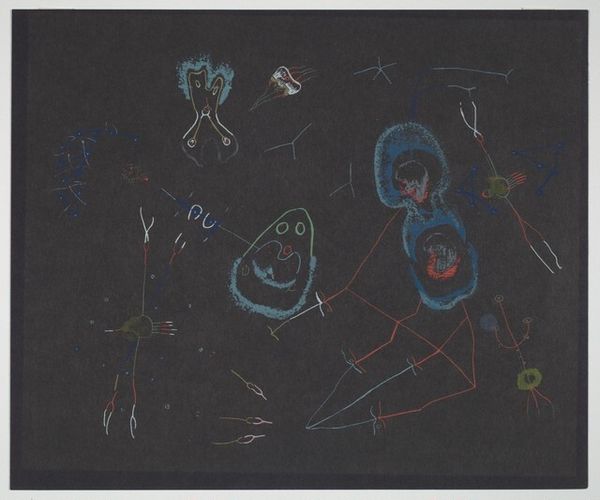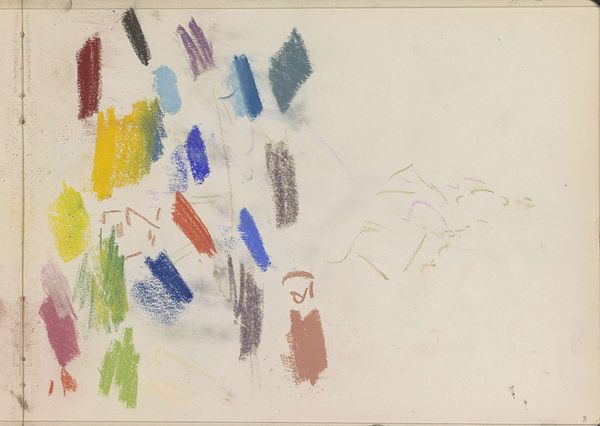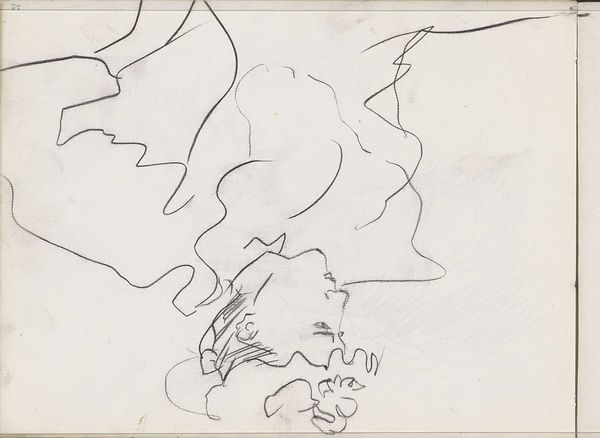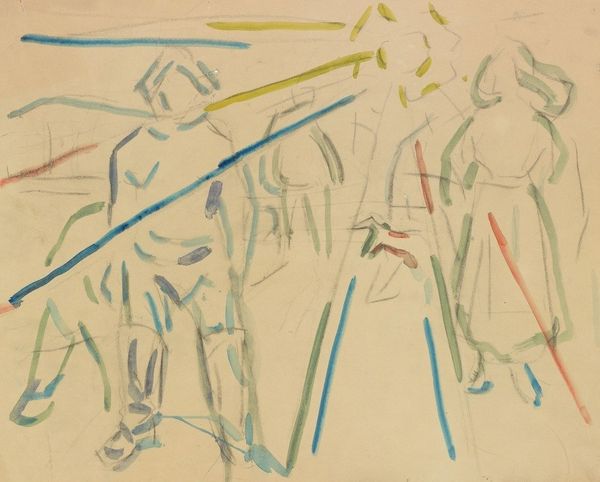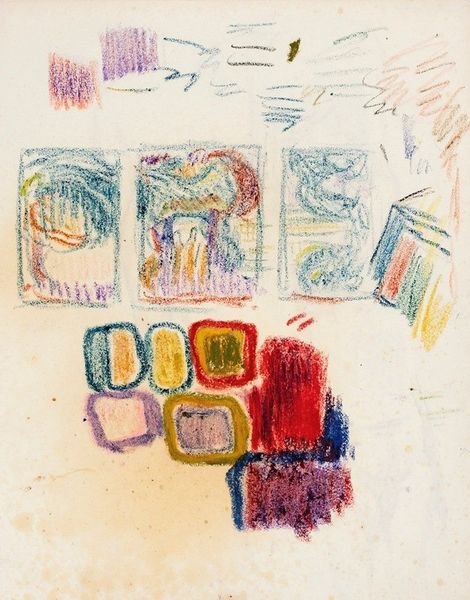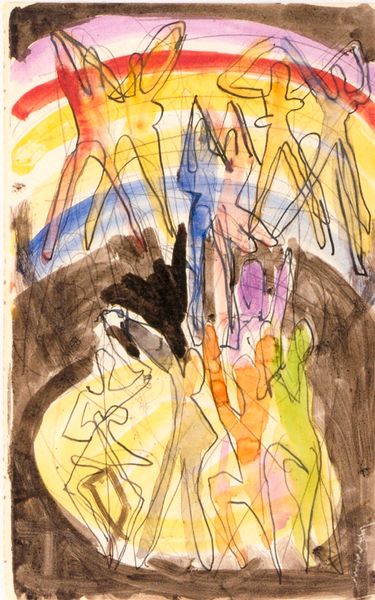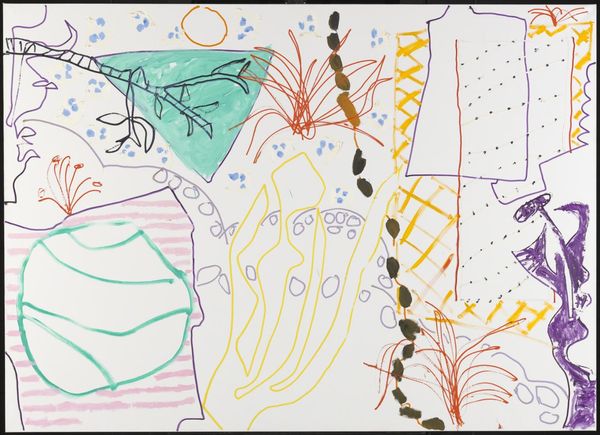
drawing, coloured-pencil, pastel
#
drawing
#
coloured-pencil
#
landscape
#
figuration
#
abstract
#
expressionism
#
pastel
Copyright: Public Domain: Artvee
Curator: Right now, we're looking at an untitled drawing by Edvard Munch. It’s a work on paper, likely pastel and coloured pencil. Editor: The first thing that strikes me is its dreamlike quality. Like peering into a memory, hazy edges, soft hues, that little pink figure seems to float. Curator: Yes, that ambiguity is key to Munch. Though recognized as a landscape piece, it's definitely not trying to give you realism. The way the crowd in the foreground blurs and almost becomes abstract adds a kind of anxiety. Editor: I think that anxiety is intrinsic to depictions of public entertainment. Think about how vulnerable performance always is. And the fact that we only see the backs of the heads of the crowd is pretty intense, there's an erasure and perhaps objectification that is inescapable. The red figure almost reads as trapped, despite the implications of its profession. Curator: Hmm. Trapped, maybe not entirely. Look how he often represents human figures within stark natural settings – almost dwarfed by nature's power. I feel some of that resonates in this drawing. Perhaps that red figure dancing on the stage suggests the fragile triumph of the human spirit facing an unfeeling world? Editor: The “triumph of the human spirit” is often tied to capital in ways we shouldn't ignore. Even though we don't know what is being presented on stage in the image, we have to acknowledge the historical context in which Munch created his art, rife with socio-economic exploitation of certain populations more than others. And furthermore, look how this imbalance is recreated in the image itself—a mass of bodies stares upward as someone risks bodily harm for their entertainment. The artist may not have been trying to illustrate this exact point, but it doesn't mean it is not there. Curator: Well, that’s a particularly critical lens through which to view Munch. He was obviously tapping into something emotionally primal—an existential rawness—and you're grounding that reading in material, capitalist forces... Editor: Yes. My experience of any artwork is going to exist between the art and what it says about personhood, our politics, what matters. And hopefully complicate the way we see. Curator: Okay. Always appreciated. I leave this piece now with an added question: Is there always inherent inequality built into moments of joy?
Comments
No comments
Be the first to comment and join the conversation on the ultimate creative platform.
